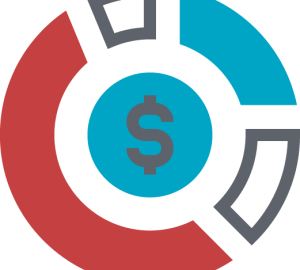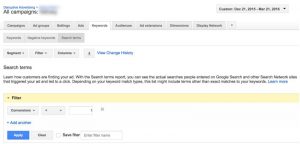This is the second piece in a two-part series on how to budget for your advocate marketing program. This post focuses on creating a rewards budget.
 Advocate marketing programs require forms of recognition, one of which can come in the form of rewards. When an advocate does something for you, like send you a referral or write a review, you can reward them with points. Your advocates can then redeem these points for prizes such as company swag, cool gadgets or tickets to your annual user conference.
Advocate marketing programs require forms of recognition, one of which can come in the form of rewards. When an advocate does something for you, like send you a referral or write a review, you can reward them with points. Your advocates can then redeem these points for prizes such as company swag, cool gadgets or tickets to your annual user conference.
You’re probably thinking, “Those prizes sound expensive.”
The truth is, advocate rewards don’t have to cost you a fortune. You can give away prizes that appeal to your customers without blowing your budget.
Advocates don’t always want monetary rewards
The key to a successful advocate marketing program is understanding your advocates. This includes knowing which rewards will motivate them to act.
The cool part is, these rewards don’t always have to be tangible or have a high monetary value.
I’ve found that advocates are motivated by four drivers: Status, Access, Power and Stuff (SAPS). For example, some advocates want VIP Access to your company and would love to chat with your CEO. Advocates who crave Status like it when others recognize their expertise, so they may enjoy speaking at one of your events.
If you don’t know what your advocates want, just ask! You can also learn what they like by running a pilot program and seeing what rewards get redeemed most.
Setting up a budget
So, how much should you set aside for rewards that will cost you money?
There are two ways to go about building a budget:
1. Pick a set amount for rewards and make it work.
Each company is different and there aren’t any benchmarks for exactly how much you should put aside for rewards.
I recommend starting by using a portion of your customer marketing budget—about 10%—for advocacy rewards.
Once you’ve set an amount, communicate that with your advocates—they will appreciate your honesty. Then, limit the monetary rewards that can be redeemed that month to stay within your budget.
Review your rewards program after your first quarter. If you’ve received valuable acts of advocacy, see if you can increase your budget to get more from your advocates next quarter.
If you max out your rewards and your activity plateaus, you can find other ways to recognize advocates so you can drive action.
2. Base your budget on the amount of advocacy you expect to have (i.e. work backwards).
In the first post in this series, I discussed how to put a price tag on acts of advocacy. This figure is based on your goals and how much you’re willing to spend to achieve them.
Let’s say your goal is to get 100 referrals this year, and you’re willing to pay advocates $ 20 per referral. If you hit your goal, you’ll spend $ 2,000 to get 100 referrals.
However, before you set aside $ 2,000, you should know that our research has shown that only 20% of advocates redeem their points for rewards. This means that you’ll likely pay only $ 400 for 100 referrals (or $ 4 per advocate).
It’s good to budget a bit more than you need. So plan for a 50% points redemption rate for all of your challenges so you don’t run low on funds. In this example, let’s budget $ 1,000 for referrals, just to be safe—you can always re-adjust later.
Three ways to stay on budget when rewarding advocates
Here are three other things to consider when planning your rewards budget.
1. The best rewards don’t cost a lot
You don’t need to give away expensive gadgets or over-the-top experiences. The best rewards may not cost you anything.
For example, advocates may appreciate a tour of your office and the chance to meet your team. They may like to be featured in your webinars, success stories and blog posts so they can lift their professional profile. A simple shout-out on social media can also make them feel valued.
Low-cost reward ideas include Amazon gift cards (which your AdvocateHub automatically delivers). We’ve found that company swag is one of the most requested rewards. (Just don’t forget about delivery costs!)
2. Use scarcity
As marketers, we know scarcity drives action—as well as helping you control your advocate marketing budget. The fewer rewards you have, the more valuable they are.
For example, you can run an advocacy challenge that asks customers to send you referrals. Then, you can offer a reward to the first five customers who do so. The limited rewards will drive faster action.
For more expensive rewards, such as tickets to your user conference, you can announce upfront that there’s only a few available. This way, advocates are motivated to complete challenges quickly so they can redeem their points before the reward runs out.
3. Start slow
The worst thing you can do is take away rewards. Advocates hate it when you remove value from your program. Rather than creating a huge rewards budget and blowing through it right away, it’s best to add more rewards as you go.
Your budget should increase as you see more value from your advocacy program and learn which rewards drive the most engagement. You can also publicize (with small challenges) when you’ve added new rewards, so advocates know your program isn’t static.
Remember that relationships take time to flourish. As advocates get to know you and gain value from your relationship, they will be less inclined to want monetary rewards. And by then, you’ll know exactly what to provide to keep them happy—and keep yourself on budget!
Business & Finance Articles on Business 2 Community
(110)







